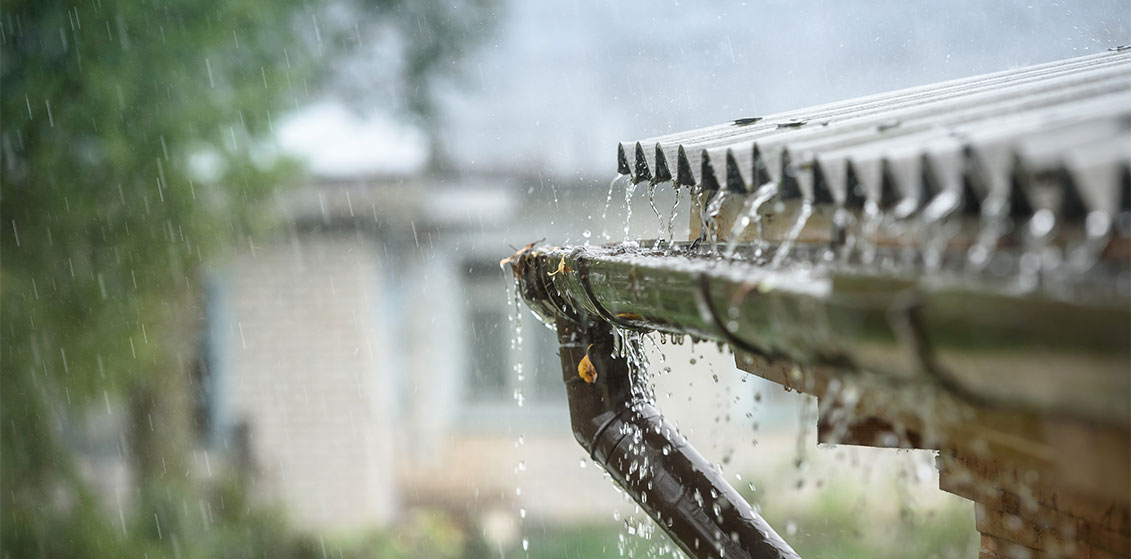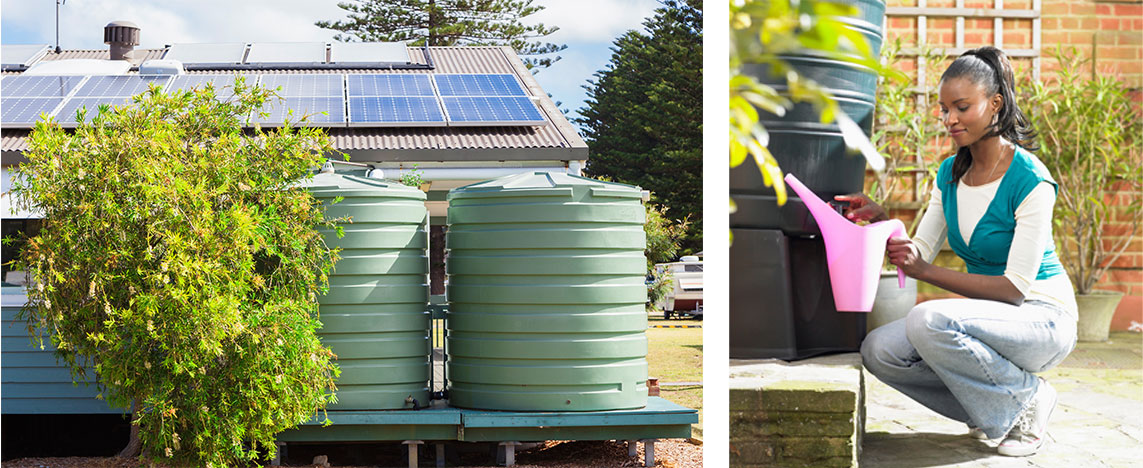Rainwater harvesting is by no means a new concept, but the practice has seen many additions and advances over the years as the need for water saving remains ever-crucial. Here, we re-consider the importance, uses and benefits of rainwater harvesting…

Essentially, rainwater harvesting – also called rainwater collection or rainwater catchment – is the process of collecting and storing rainwater run-off from large surfaces, for residential, industrial and/or commercial re-use.
The way this happens is through systems that help direct rainwater from a roof, for example, through gutters and downpipes, to either an underground or above-ground storage tank (or series of tanks), ideally running the water through a first flush device to help eliminate atmospheric contaminants, sediment and other roof debris, followed by filtering to make the water safe for use and also to prevent long-term contamination of the tank, before connecting to the storage tank/s to be reserved or pumped as and where it’s needed.
With a vast range of tanks available in a variety of shapes, sizes, designs and colours to suit any application and blend into any landscape, including accessories for filtration, booster pumps where pressure is required etc, there is a fit for every setting and water-saving need. UPP is also a preferred installer of JoJo Tanks.

Harvest rainwater to:
- Supplement municipal water and reduce your water bill by as much as 90%.
- Enjoy an alternative supply during water restrictions.
- Help irrigate your garden and top up pools and ponds.
- Flush toilets (as both a domestic and commercial water-saving solution).
- Bath, shower or drink it (filtering systems help turn the run-off into perfectly safe, potable water).
- Do the laundry.
- Control storm water run-off, which reduces the risk of soil erosion, minimises the impact on local infrastructure and sewer channels, and helps reduce the threat of flooding.
In terms of the ongoing impact of climate change and global warming, it’s worth noting that scientists predict an increase in precipitation as the world warms. In fact, you don’t have to ‘Google’ very far to find models suggesting that most of the world will have a 16-24% increase in heavy precipitation intensity by 2100. In other words, heavy rain is likely to get heavier, which could lead to longer dry spells and a higher risk of flooding globally.
The future of water is through saving it as much as we can. Just look at what happened in Cape Town, for instance, while a city like Johannesburg sits with a severely strained infrastructure that leads to major water losses daily. The average annual rainfall for South Africa stands at about 464mm, with the rainy season for the majority of the country occurring from November to March. It makes sense to take advantage of the gift of rain as a ‘free’ water source by catching it, holding onto it and drawing from it to help lessen our collective burden.
At the UPP Group, we consult and provide innovative solutions to market using current technology, and through educating and empowering licensed plumbing technicians. We are all about revolutionizing and transforming the way South Africa does plumbing – from training to service.